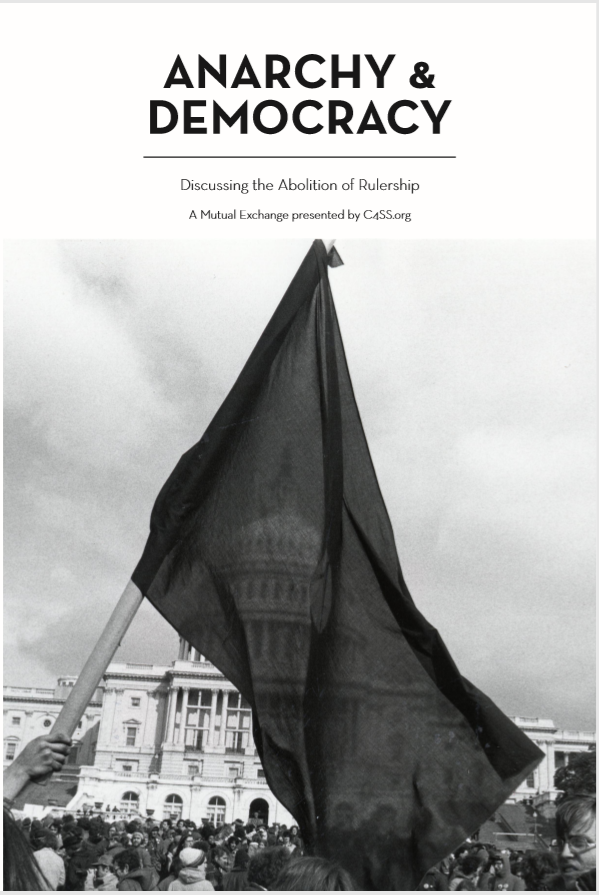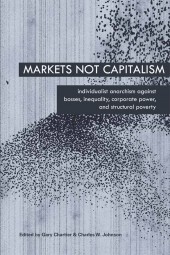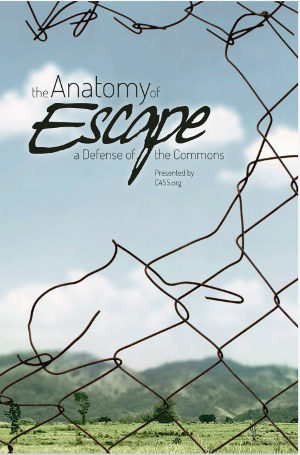It was long believed that the queen played a central role in the complex social order of an ant colony, through the exercise of direct command and control over her subjects. Not so. Biologist Pierre-Paul Grasse coined the term “stigmergy” for the anthill’s social organization There is no central coordination, no hierarchy, no administrative mechanism. Each ant’s behavior is entirely spontaneous and self-directed, as it responds independently to the chemical trail markers left by other ants.
Mark Elliot, whose doctoral dissertation is probably the best study on the subject to date, applied the term “stigmergy” to any form of human socialization in which coordination is achieved not by social negotiation or administration or consensus, but entirely by independent individual action against the background of a common social medium.
That’s essentially the organizational form used by the Linux developer community, by networked resistance movements like the Zapatista global support network of the 1990s, and by the post-Seattle anti-globalization movement. It’s the way Wikipedia and al Qaeda are organized.
Eric Raymond, writing on the open source software community, called it the “Bazaar” model. Under the Bazaar model, every individual contribution is modular. Every participant is self-selected, and her action is based entirely on her independent judgment of what needs to be done. So all actions are not the result of consensus or majority consent, but of the unanimous consent of everyone participating. Those with the highest level of interest in a particular aspect of a problem and the highest affinity for finding a workable solution contribute to that part of the project.
In networked movements, any such contribution or innovation in a single cell will only be adopted by those who find it valuable. Those that are considered valuable instantly become the property of the entire network, free for adoption by all. So the self-selected individuals most interested in solving problems are spontaneously developing innovative solutions all over the network, and those solutions that work immediately become available for adoption by each cell deciding only for itself.
As Cory Doctorow points out, the record companies developed their DRM in the mistaken belief that it only had to be strong enough to deter the average user, and that the small number of geeks capable of cracking it would be economically insignificant. But in fact it takes only one geek to crack the DRM and post an MP3 on a torrent download site, and it becomes freely available to average users. In a stigmergic organization, the intelligence of each becomes the property of all with virtually no transaction costs.
In contrast to a hierarchically administered organization, in which proposed innovations must be evaluated and deliberated upon — gestated — by a central authority over a period of many months, a stigmergic network goes through generational changes in praxis with the speed of replicating yeast.
That’s exactly what’s happened with the social movements of the past year and a half — the arc from Wikileaks’ cable release in Summer 2010 to the latest developments in Occupy Oakland. Bradley Manning, a heroic soldier morally appalled at the atrocities committed by U.S. forces in Iraq, allegedly took it upon himself to release hundreds of thousands of classified diplomatic cables to Wikileaks. Wikileaks chose to post them online.
In the face of attempts to shut down Wikileaks by seizing their domain name or cutting off funding vectors like PayPal, the stigmergic innovation mechanism kicked into high gear. Thousands of mirror sites sprang up all over the world. Thousands more websites and blogs posted the numeric IP addresses for Wikileaks’ sites. And hackers like The Pirate Bay’s Rick Falkvinge immediately started thinking about an open domain name service and open digital payment systems.
The Wikileaks cables included private diplomatic assessments of the level of corruption in the Tunisian government, which were quickly circulated by Facebook among the dissident community. Mohamed Bouazizi, a poor vegetable vendor in Tunisia, set himself on fire in protest after being slapped in the face by a government official, sparking a revolution that has toppled several Arab governments and since spread from London and Amsterdam to Spain to Greece and Israel, to Madison and Wall Street — and outward again from Wall Street to hundreds of cities around the world.
Egypt’s attempt to destroy the revolution by shutting down the Internet spurred projects like ContactCon to a new sense of urgency in developing a “NextNet,” a global open meshwork that can’t be shut down because the only routing nodes are the users’ own hardware at the endpoints.
The Occupy movement itself operates stigmergically, with innovations developed by one node becoming part of the total movement’s common toolkit. Some Oakland demonstrators made the first experiment in occupying a vacant office building and encouraging the homeless to squat vacant and condemned buildings all around the city. They did this in a clumsy and imprudent way, unfortunately, provoking vicious police repression.
But the basic idea remains, and someone will soon do it better — because that’s the way stigmergy works. All across America, there are vacant office buildings and homes owned by banks, and millions of homeless people who need a place to sleep. There aren’t enough police and sheriffs’ deputies in the world to stop them from moving in, if they get it into their heads to start moving in on their own initiative.
What’s more, the homeless have nothing to lose — if they get kicked out, they were housed for the period of time while it lasted. And every single eviction becomes another point of failure for the system, to be publicized with cell phone videos and streaming Internet coverage. Every single house becomes the site of another defensive stand, another PR nightmare for the local “authorities” hauling families out of their homes before the eyes of the world. Already, the Minneapolis movement has interposed itself in defense of foreclosed homeowner Monique White.
It’s only a matter of time until local Occupy movements become centers of innovation, not only in protest tactics, but in new forms of social organization in the communities where they live. In communities all across the country, people will realize that they’re neighbors who live in the same town or city — there’s no reason their cooperation has to be limited to the park or town square.
Occupy will become not just a protest movement, but a school for living: Local currency and barter systems for the exchange of skills by the unemployed, small-scale informal and household production techniques for unemployed workers who need to provide for as many of their own needs as possible through self-provisioning, intensive horticultural techniques like permaculture — the possibilities are endless.
Occupy Wall Street recently became a teach-in, with Michel Bauwens of the Foundation for P2P Alternatives speaking in Zuccotti Park on peer-production as a mechanism for creating value, and Juliet Schor discussing the decentralist and DIY economic ideas in her book Plenitude. A character in Marge Piercy’s Woman on the Edge of Time said that the new world, the revolution, wasn’t built by slogans and big meetings. It was built by people who found new ways of feeding themselves, new ways of teaching their kids, new ways of relating to each other.
So all over the world, we’re figuring out ways to live without the land and capital of the classes who think they own the planet, ways to make their land and capital useless to them with no one to work it for them. And they can’t stop us because we have no leaders.
In the words of Neo, in “The Matrix”:
“I know that you’re afraid … you’re afraid of us. You’re afraid of change. … I didn’t come here to tell you how this is going to end. I came here to tell you how it’s going to begin. … I’m going to show these people what you don’t want them to see. I’m going to show them a world without you. A world without rules and controls, without borders or boundaries. A world where anything is possible.”
Or more succinctly, as Anonymous puts it: Expect us.
You can help support C4SS by purchasing a zine copy of this article, Converge and Overtake!: The Stigmergic Revolution and The General Idea of the Revolution in the 21st Century.
Translations for this article:







